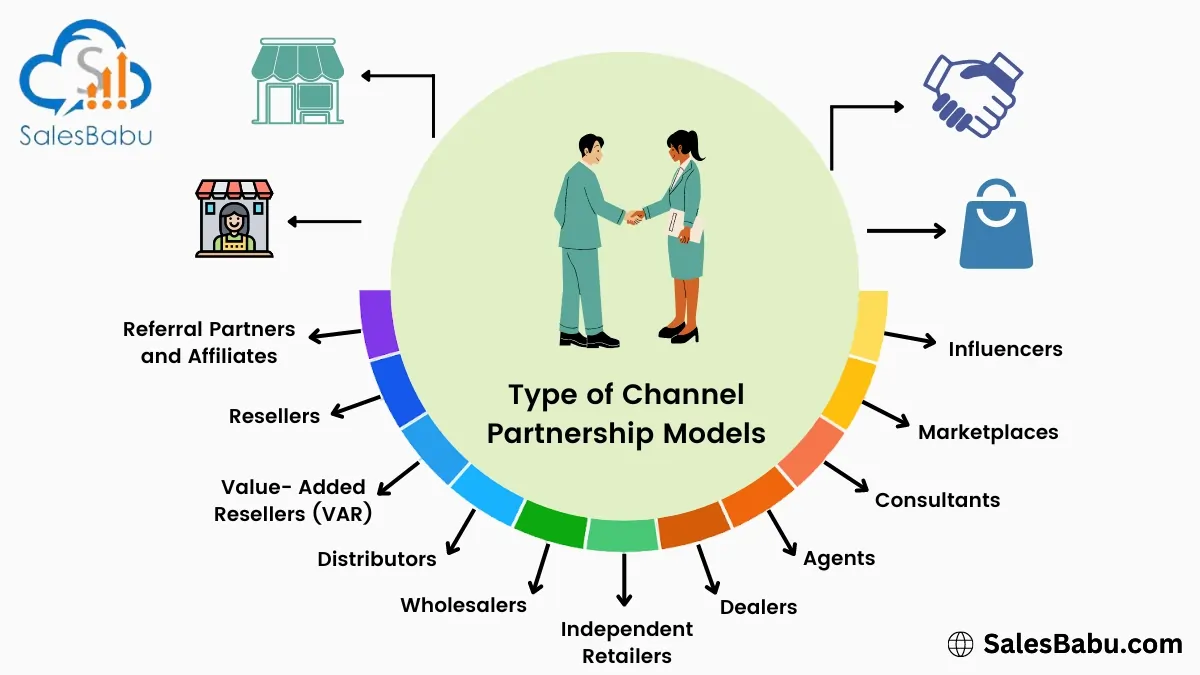If you’re a business personality who manufactures and produce goods, then you might have how you will sell the product to the consumer. Then I must say, there are two different ways of sales methods — direct sales and channel sales.
What is Direct Sales?
Direct sales refer to the process of selling products or services directly to consumers without the involvement of intermediaries such as wholesalers, distributors, or retailers. In a direct sales model, the manufacturer or service provider interacts directly with customers to market, sell, and deliver their products or services.
Choosing the right channel strategy can help your company to reach its target consumer base and maximize profits.
Read More- CRM for Channel Sales Maintaining Relations with Partner

Advantages of Channel Sales
For manufacturing company owners targeting several facets of their business operations, a channel sales strategy can be beneficial. It reduces the requirement for massive investments in sales and distribution, as the company can depend on third-party establishments to allocate its products.
This approach enables the company to deviate its focus towards other important areas, such as product development and other functions. The channel sales model mitigates the encumbrance of selling from the internal team, allowing employees to focus on different aspects of their work.
Moreover, channel sales regulates a prompt growth and expansion of product and service lines. With the sales process foremostly managed by vendors or resellers, the industry has spared the work of creating and training an internal sales force to serve the latest consumers. Such allows the industry to pay more attention to improving the quality of its offerings and elevating revenue.
Read More- Channel Visibility in SalesBabu CRM Software
Cons of Direct sales
While direct sales offer numerous advantages, there are also some drawbacks and challenges associated with this approach:
- Higher Costs: Direct sales require companies to invest in marketing, sales staff, customer support, and distribution infrastructure, which can be expensive to establish and maintain. This can eat into profit margins, especially for smaller businesses with limited resources.
- Limited Reach: Direct sales models may have limitations in reaching a broad audience, particularly for companies with niche products or limited marketing budgets. Without the reach of established retail channels or distribution networks, it can be challenging to expand into new markets or reach customers in remote areas.
- Complexity of Operations: Managing a direct sales operation involves various tasks, including marketing, sales, order fulfillment, and customer service. Coordinating these activities and ensuring a seamless customer experience can be complex and resource-intensive, particularly as the business grows.
- Lack of Expertise: Direct sales require companies to have a deep understanding of their target market, effective sales and marketing strategies, and the ability to provide excellent customer service. For businesses without expertise in these areas, navigating the complexities of direct sales can be challenging.
- Limited Feedback: While direct sales allow companies to gather customer data and insights, the feedback may be limited compared to indirect sales channels. Without the intermediary of retailers or distributors, companies may have fewer opportunities to gather feedback from customers who interact with their products in-store or through other channels.
- Risk of Channel Conflict: If a company sells directly to customers while also using indirect channels such as wholesalers or retailers, there is a risk of channel conflict. This can arise if intermediaries perceive direct sales as competing with their own efforts, leading to tensions and potentially damaging relationships.
- Scalability Challenges: Scaling a direct sales operation can be challenging, particularly if the business relies heavily on personal selling or face-to-face interactions. As the customer base grows, maintaining the same level of personalized service and customer engagement may become increasingly difficult.
What are Channel Sales?
Channel sales involve middlemen who sell and distribute products of the manufacturing company. You can also consider them as“indirect sales” since you’re not selling them to the customers directly.
An example of a manufacturing company that uses partner sales is Coca-Cola. You can’t purchase a Coke from the company’s website. Instead, you have to buy the product through a third-party vendor like a grocery store, a vending machine, or another sales channel.
Read More – What is a Distribution Management System?
Pros of using Channel Sales
If you’re a Manufacturing company owner focused on other parts of your company, a channel sales strategy might be beneficial. You won’t need to invest much heavily in sales and distribution. Instead, your company needs to find the right third party to distribute your product.
This will allow your company to focus on other areas of your business, like product development or operations.
The channel sales model takes all the burden of selling from your internal team department and lets employees focus on other areas of work.
Additionally, channel sales even allow industries to expand their product and service lines more quickly. Because the vendor or reseller is mainly handling the sales process, the industry doesn’t have to worry about building up or training an internal sales force to accommodate new consumers.
Instead, the industry can focus its attention on the quality of its goods and services and on growing revenue.
Read More – Automate Your Primary And Secondary Sales With SalesBabu DMS
Cons of Channel Sales
Channel sales might be an attractive sales strategy, but you should consider the big picture first. One of the main problems associated with channel sales is a loss of control.
Manufacturing businesses don’t have as much say over how third-party display or sell their products. A channel manager might help mitigate this risk, but your company has to pay that person a wage, which may increase costs.
Companies must work hard to control the price at which the third-party vendor sells the product. If a third-party vendor arbitrarily inflates a cost, it could impact the price strategy your company’s team chose.
Read More – Right Approach To Distribution Management Software (DMS)
Another problem with the channel sales model is your company will not be able to see 100% of the profit revenue. When your company enters a partner program, your company has to make concessions.
In all likelihood, this will come in a monetary form. For instance, a potential partner may ask your company for a certain percentage of all the products sold in the store. So, in addition to shipping the goods to the third-party vendor for sale, your company also has to give up a cut of your profit revenue generated during the selling process.

Difference between Direct Sales vs Channel Sales
Direct sales and channel sales are two distinct distribution strategies used by companies to sell their products or services, each with its own advantages and disadvantages. Here are the key differences between the two:
- Direct Sales:
- Definition: Direct sales involve selling products or services directly to consumers without the involvement of intermediaries such as wholesalers, distributors, or retailers.
- Control: Companies have full control over the sales process, from marketing and promotion to pricing and distribution.
- Customer Interaction: Direct sales allow for direct communication between the company and the end consumer, enabling a more personalized and direct relationship.
- Costs: While direct sales can result in higher profit margins by eliminating intermediaries, they also require significant investment in marketing, sales staff, and infrastructure.
- Examples: E-commerce platforms, telesales, door-to-door sales, direct response marketing.
- Channel Sales:
- Definition: Channel sales involve selling products or services through intermediaries such as wholesalers, distributors, retailers, or value-added resellers (VARs).
- Reach: Channel sales enable companies to reach a broader audience and expand their market presence by leveraging the networks and expertise of intermediaries.
- Cost Efficiency: While channel sales may result in lower profit margins due to the involvement of intermediaries, they can be more cost-effective in terms of distribution and market reach.
- Complexity: Managing channel relationships and ensuring consistent branding and messaging across multiple intermediaries can be complex and challenging.
- Examples: Selling through retail stores, distribution networks, online marketplaces, reseller programs.
Conclusion
As a small company owner, choosing the proper sales-deals strategy will go a long way toward bringing in new consumers and boosting revenue.
While the direct sales model actually provides for more personal interaction with its customers, it requires a great good deal of time and effort on the behalf of the industry. On the other hand, utilizing a channel sales model means your company needs to sacrifice its control in exchange for greater reach.
Ultimately, neither model is totally perfect, and company owners need to check the pros and cons before choosing.













